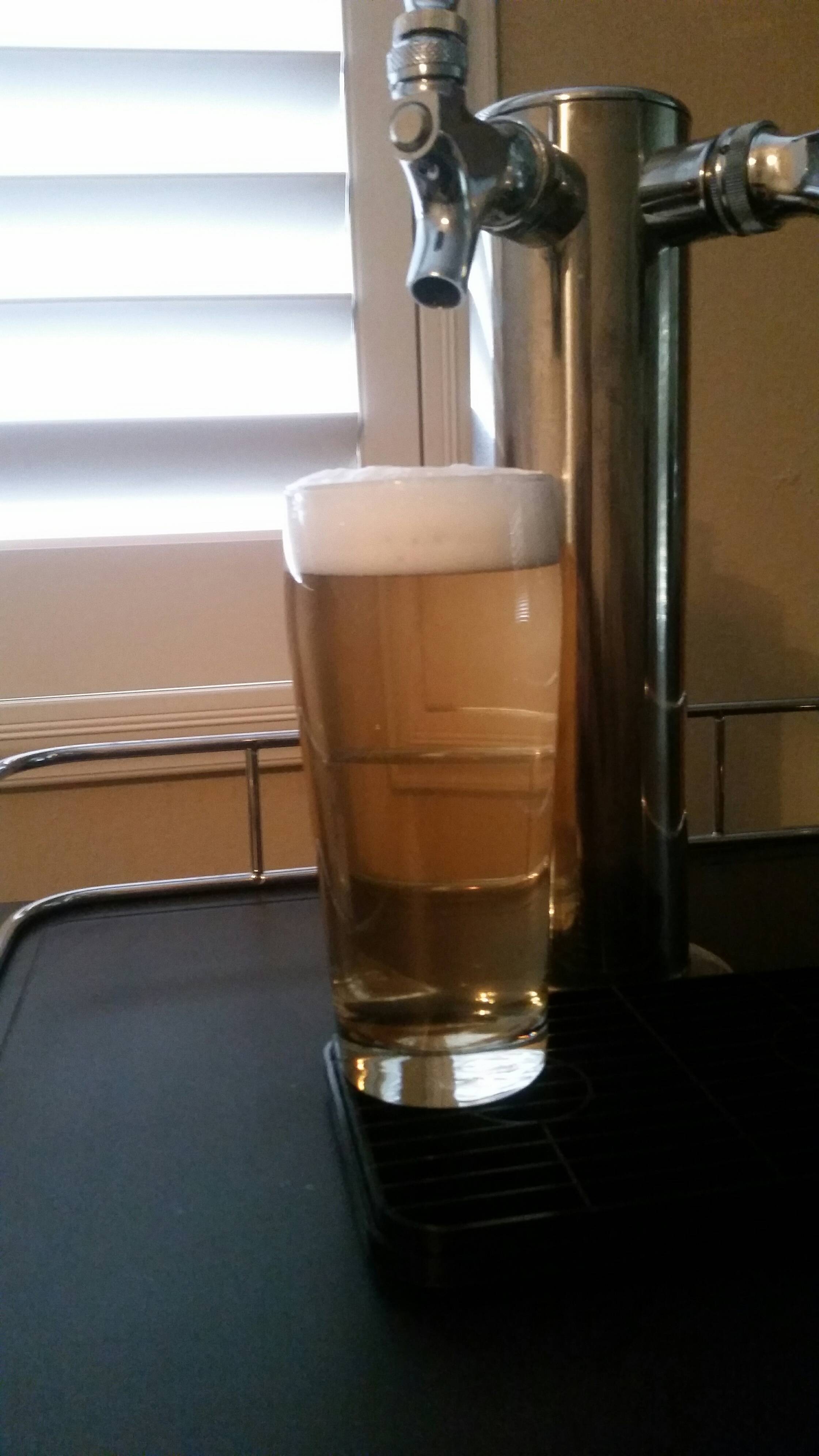- Recipe Type
- All Grain
- Yeast
- w34/70
- Additional Yeast or Yeast Starter
- Use 2 packs 34/70
- Batch Size (Gallons)
- 5.5
- Original Gravity
- 1.046
- Final Gravity
- 1.009
- Boiling Time (Minutes)
- 60
- IBU
- 21.2
- Color
- 2.3
- Primary Fermentation (# of Days & Temp)
- 10 days @ 55F
- Secondary Fermentation (# of Days & Temp)
- 4 days @ 65F
- Additional Fermentation
- 4 weeks @ 35F
- Tasting Notes
- Light, Crisp, Clean
This recipe was inspired by http://www.brewingwithbriess.com/Recipes/beer/display/amaze-ake-me-japanese-pilsner. I made several changes to fit my tastes and brewing setup. I also borrowed the hopping schedule from this thread https://www.homebrewtalk.com/showthread.php?t=255659. That was one of the first beers I made and liked the hop combo a lot. I went with that hopping schedule because its a little more unique than just using noble hops. Sorachi Ace is used in Sapporo so it fits within the Japanese theme along with the rice. The two hops together will give you a subtle lemon/lime character, making it even more refreshing.
Grains:
5# Briess Pilsen
4# Jasmine Rice (or any other rice variety)
1/2# Acid Malt
1/2# Carapils
Hops:
.25oz Motueka @ 60
.25oz Motueka @ 20
.25oz Sorachi Ace @ 20
.25oz Sorachi Ace @ 7
Water: I used tap water (mine is very soft) and dechlorinated it with campden tablets. My water is pretty similar to the "American Light Lager" water profile in Bru N Water.
Instructions: If you have a mill you can run the rice through once to increase surface area. That should give you faster conversion in the mash. I've done it without milling and got great efficiency so if you don't have a mill don't stress about this step.
Add rice to 1.5 gallons of water. I didn't wash the rice because I figured the starches would get converted during the mash. You can wash if it if you want to. Bring the water to a boil then cover and let simmer for 20 minutes
Mash in with your grains. I have only done single infusion with this recipe, although you could use a step mash. I like to mash in around 145F and then add the rice, which will bring the temp up a bit. I try to target 150-152F once everything is added. Make sure your pH is in a good range (5.3-5.4). Mash for 1 hour. I BIAB so removal of the rice and grains is easy. I'm not sure how it would go with a conventional setup.
Boil, add hops, whirlfloc, chill like normal. I like to chill the beer to 55F before adding my lager yeast. I've also used WLP029 with great success in this beer, but the true lager yeast is a little cleaner.
That's it! The beer turns out very light and crisp. Its sure to satisfy the macro drinkers but it has subtleties that craft lager drinkers can appreciate as well
edit: If you don't feel like doing the rice cooking part, you could just buy 4# of flaked rice from the HBS. I like being able to choose the rice variety though so I choose to cook my own
Grains:
5# Briess Pilsen
4# Jasmine Rice (or any other rice variety)
1/2# Acid Malt
1/2# Carapils
Hops:
.25oz Motueka @ 60
.25oz Motueka @ 20
.25oz Sorachi Ace @ 20
.25oz Sorachi Ace @ 7
Water: I used tap water (mine is very soft) and dechlorinated it with campden tablets. My water is pretty similar to the "American Light Lager" water profile in Bru N Water.
Instructions: If you have a mill you can run the rice through once to increase surface area. That should give you faster conversion in the mash. I've done it without milling and got great efficiency so if you don't have a mill don't stress about this step.
Add rice to 1.5 gallons of water. I didn't wash the rice because I figured the starches would get converted during the mash. You can wash if it if you want to. Bring the water to a boil then cover and let simmer for 20 minutes
Mash in with your grains. I have only done single infusion with this recipe, although you could use a step mash. I like to mash in around 145F and then add the rice, which will bring the temp up a bit. I try to target 150-152F once everything is added. Make sure your pH is in a good range (5.3-5.4). Mash for 1 hour. I BIAB so removal of the rice and grains is easy. I'm not sure how it would go with a conventional setup.
Boil, add hops, whirlfloc, chill like normal. I like to chill the beer to 55F before adding my lager yeast. I've also used WLP029 with great success in this beer, but the true lager yeast is a little cleaner.
That's it! The beer turns out very light and crisp. Its sure to satisfy the macro drinkers but it has subtleties that craft lager drinkers can appreciate as well

edit: If you don't feel like doing the rice cooking part, you could just buy 4# of flaked rice from the HBS. I like being able to choose the rice variety though so I choose to cook my own



































![Craft A Brew - Safale S-04 Dry Yeast - Fermentis - English Ale Dry Yeast - For English and American Ales and Hard Apple Ciders - Ingredients for Home Brewing - Beer Making Supplies - [1 Pack]](https://m.media-amazon.com/images/I/41fVGNh6JfL._SL500_.jpg)



























